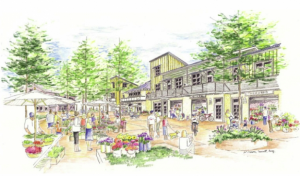We make a difference in the world, by how we choose to invest our philanthropic dollars and/or investment funds.
We know that you know that we face planetary catastrophe if we don’t change the way our economy works today — we need to divest from those activities that are causing harm to the earth, and invest in ones that are restorative and regenerative. Whether you’re talking about large amounts, such as endowment funds of Ivy League universities, or the charitable donations you make at the end of the year, you know that moving from unsustainable practices to restorative and regenerative ones is what’s needed to reduce carbon in the atmosphere and put it back into the soil where it literally sustains life.
Our nonprofit, the Center for Regenerative Community Solutions (CRCS), is at the forefront of the effort to transform our economy into one that creates sustainable prosperity for everyone. Buckminster Fuller was amongst the first to recognize that we are technologically capable of producing a world that sustains everyone, and that gives us the opportunity to heal our planet, our psyche, and our civilization.



 While we’re working hard on what we expect to be an avalanche of
While we’re working hard on what we expect to be an avalanche of